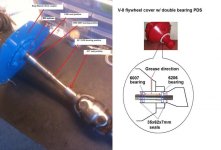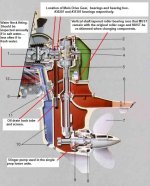Hello all. My first post.
I need advice please. I am a mechanic but the stern drive is new to me.
I am m
helping a mate keep his twin penta 270 drives running and one is leaking water from the lowest point of the engine bell housing. It's not coolant from the engine . I downloaded a manual but it's not clear where the water from the stern drive flows. What I can say it it's a steady leak and if we start the engine the leak becomes very bad. We are due to lift the boat from the water soon but need to find the leak first .Is there a seal between the engine and drive or is it just the large bellows I can see looking over the stern
Any advice will be welcome.
Regards Ken
I need advice please. I am a mechanic but the stern drive is new to me.
I am m
helping a mate keep his twin penta 270 drives running and one is leaking water from the lowest point of the engine bell housing. It's not coolant from the engine . I downloaded a manual but it's not clear where the water from the stern drive flows. What I can say it it's a steady leak and if we start the engine the leak becomes very bad. We are due to lift the boat from the water soon but need to find the leak first .Is there a seal between the engine and drive or is it just the large bellows I can see looking over the stern
Any advice will be welcome.
Regards Ken



